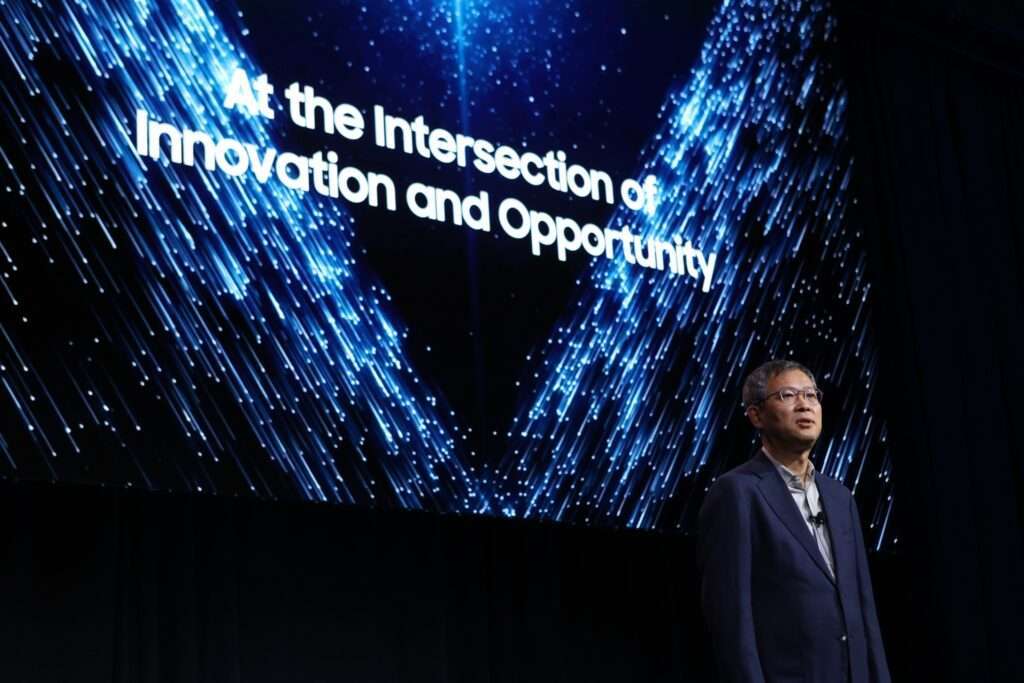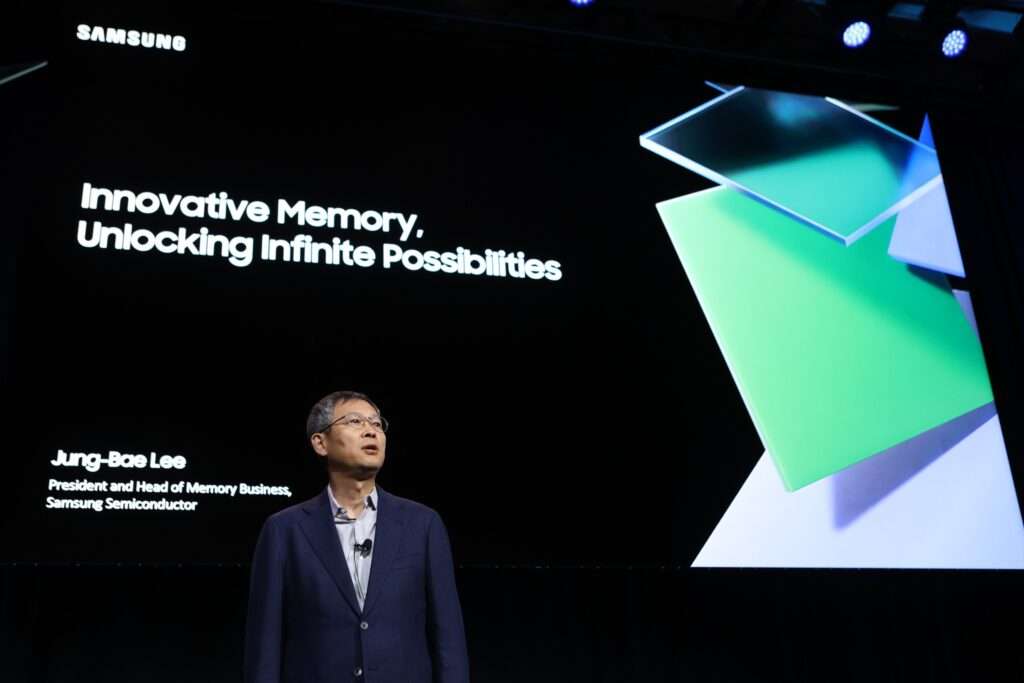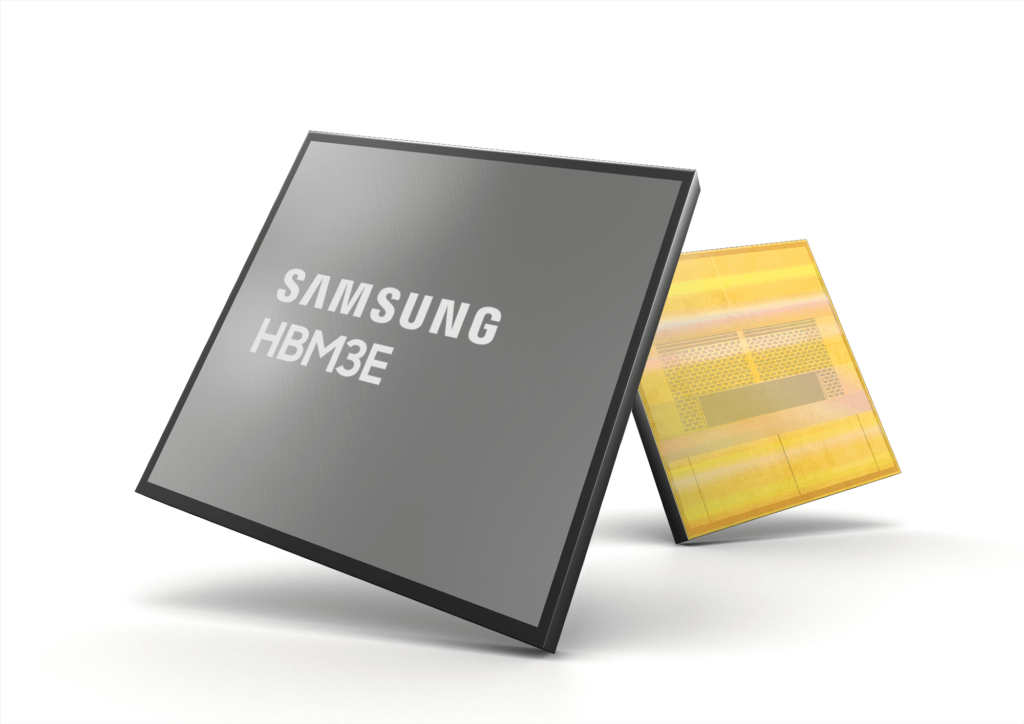
Samsung Electronics, a global leader in cutting-edge memory technology, hosted its yearly Memory Tech Day on October 20th, 2023, displaying new memory products and industry-first breakthroughs to propel technical advancements in a range of future applications, such as cloud computing, edge devices, and automotive technology.
Aiming to “reimagine memory,” the event, which drew in approximately 600 customers, partners, and industry insiders, gave Samsung officials an opportunity to elaborate on the company’s long-term strategies for maintaining its leadership in memory technology, as well as its outlook on market trends and sustainability objectives. LPDDR5X CAMM2, Detachable AutoSSD, and HBM3E Shinebolt are just a few of the new product developments that the company unveiled.

During his keynote speech, Samsung Electronics’ President and Head of Memory Business, Jung-Bae Lee, elaborated on how the company will employ advancements in novel transistor architectures and materials to meet the difficulties of the hyperscale era. For instance, Samsung is working on developing new three-dimensional structures for DRAM that operates on a sub-10 nm technology, which would enable greater single-chip capacities of up to 100 gigabits (Gb). Samsung is developing its next-generation 11nm-class DRAM, which is expected to deliver the highest density in the industry, in addition to its 12nm-class DRAM, which started mass production in May 2023.
Further advancements in NAND flash are being made to reduce cell sizes and improve channel hole etching methods, which will lead to the introduction of 1,000-layer vertical NAND (V-NAND). Samsung’s ninth-generation V-NAND, which uses a double-stack structure, is expected to be completed in time and offer the most layers in the market. Starting early next year, the business intends to begin mass production of the new V-NAND after obtaining a working chip.
“Despite the challenges, the industry is at a crossroads where innovation and opportunity meet, offering a chance for significant advancements,” stated Lee. “The new era of hyperscale AI has brought the industry to this point.” “By driving innovation and working with customers and partners to deliver solutions that expand possibilities, we will continue to be the market leader through boundless imagination and unwavering perseverance.”
Introducing Samsung HBM3E Shinebolt.

Cloud systems of today are developing to maximise computational resources, and in order to manage large capacity, high bandwidth, and virtual storage capacities, high-performance memory is needed. Using its experience in launching the HBM market for high-performance computing (HPC) and commercialising the first HBM2 in the industry, Samsung unveiled Shinebolt, its next-generation HBM3E DRAM, today.
Samsung is currently mass producing its 8H and 12H HBM3 devices, and Shinebolt is distributing samples to clients. The business intends to use its strength as a comprehensive provider of semiconductor solutions by providing a customised turnkey service that integrates advanced packaging technologies, foundry products, and next-generation HBM.
Redefining Edge Devices Through Powerful Form Factors
In order to process data-intensive tasks, today’s AI technologies are moving toward a hybrid model that allocates and distributes workload among cloud and edge devices. Accordingly, Samsung introduced a range of memory solutions that support high-performance, high-capacity, low-power and small form factors at the edge.
In addition to the industry’s first 7.5Gbps LPDDR5X CAMM21 — which is expected to be a true game changer in the next-generation PC and laptop DRAM market — the company also showcased its 9.6Gbps LPDDR5X DRAM, LLW2 DRAM specialized for on-device AI, next-generation Universal Flash Storage (UFS), and the high-capacity Quad-Level Cell (QLC) SSD BM9C1 for PCs.
Paving the Road for Automotive Memory Solutions Leadership
With advancements in autonomous driving solutions, market demand is also rising for high-bandwidth, high-capacity DRAM and Shared SSDs, which share data with multiple System on Chips (SoCs). Samsung presented its Detachable AutoSSD that allows data access from a single SSD to multiple SoCs through virtual storage.
The Detachable AutoSSD supports sequential read speed of up to 6,500 megabytes-per-second (MBps) with 4TB of capacity. As it comes in a detachable form factor, the SSD makes upgrades and adjustments easier for vehicle users and manufacturers. Samsung also displayed automotive memory solutions such as high-bandwidth GDDR7 and LPDDR5X with a more compact package size.




